By now I have acquired 12 vintage 50mm lenses based on appraisal and ravings found all over the web, loved or even worshipped by many people around the globe, some more and others less famous.
(I’m aware that I didn’t include any Leica R glass, but the financial hurdle was simply too high. Also, Minolta and Canon FD lenses were left out because of incompatibility with the Canon EOS system. See this article for more information.)
Even though I would’ve wanted to go on collecting and comparing more lenses, I decided that it’s time to stop before it gets out of hand.
(Keep in mind that I have to redo all the comparisons when I add a new lens because I don’t have a stationary “studio comparison scene” that I can always come back to.)
I will therefore put most of my collected lenses up for sale in the near future to be able to afford a very specific one, while keeping a selected few for their own special purposes.
Why another comparison to begin with?
Instead of updating old articles and adding even more bulk to my existing comparisons, I decided to start a new round with all lenses competing in identical tests.
The Contenders
I took new pictures (true to scale) of all my lenses and listed them below in no specific order.
All images were captured using the Mamiya M645A 120mm f/4 macro lens and a Yongnuo YN560-IV shot through an umbrella with a silver reflector on the opposite side for fill. The white background was lit with another YN560-IV.
This is the beginning of the end, because I already collected most of the image material I’m going to use for the upcoming comparison articles.
1. Yongnuo Lens EF 50mm f/1.8

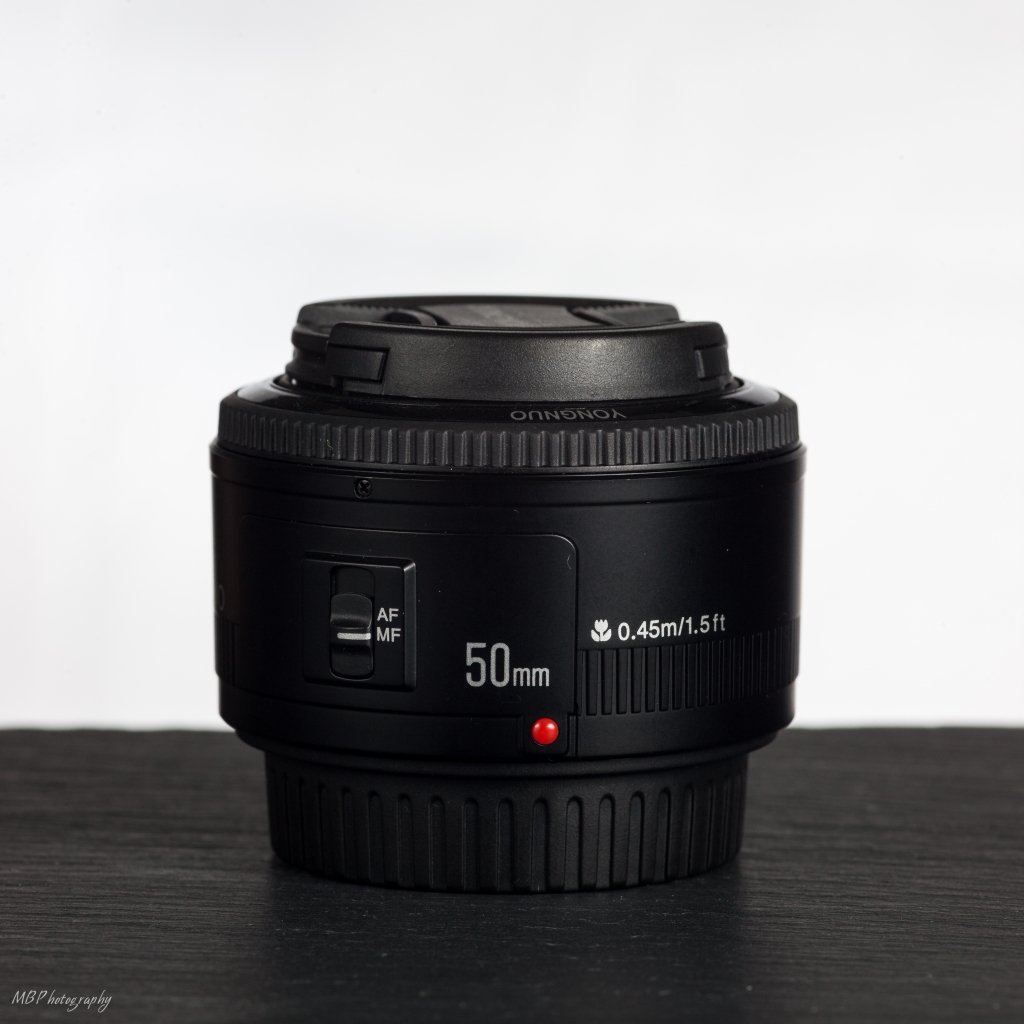
The only lens with AF in my roundup. Being built in China and optically resembling the Canon nifty fifty people often claim it to be a cheap copy. Several reviews have since proven them wrong and some have shown the Yongnuo to be far superior in some and inferior in other regards.
Because it’s in a similar price range – on the lower end though – as most of the other contenders, and because I happen to still have one, I decided to include it in the tests. The lens is made of plastic mostly (except for the glass elements) and is light as a feather. The focusing is loud but quite fast and rather precise which can’t be said for its manual focus ring. Accurate focusing is almost impossible with the exctremely short focus throw and the tiny focus ring. (at least it’s rubberized which the Canon version isn’t.)
Yongnuo is best known for their affordable speedlite systems that deliver great quality, reliability and sell for ridiculously low prices. I only use manual speedlites from Yongnuo (560 III and 560 IVs and a YN-560 TX wireless trigger that can set zoom and power on all flashes remotely).
2. Nikon Nikkor 50mm f/1.4 Ai
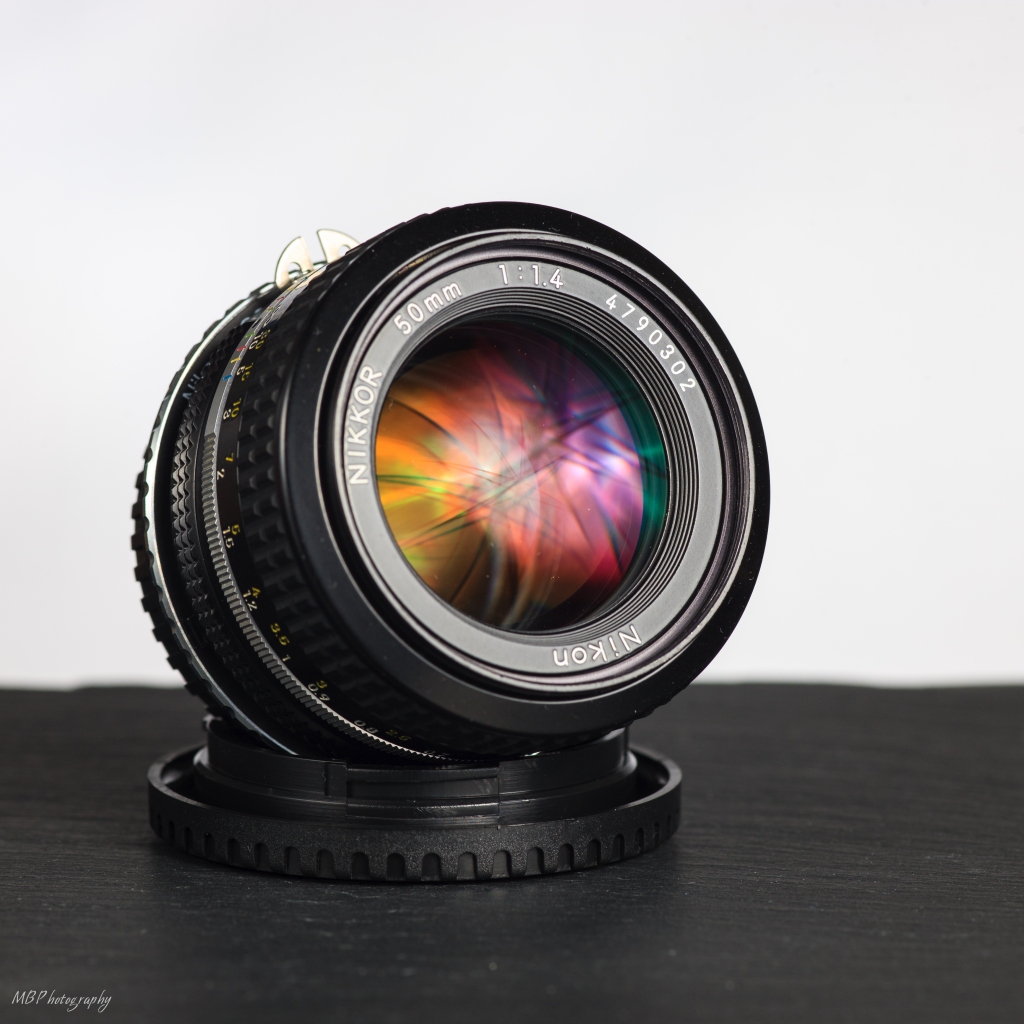
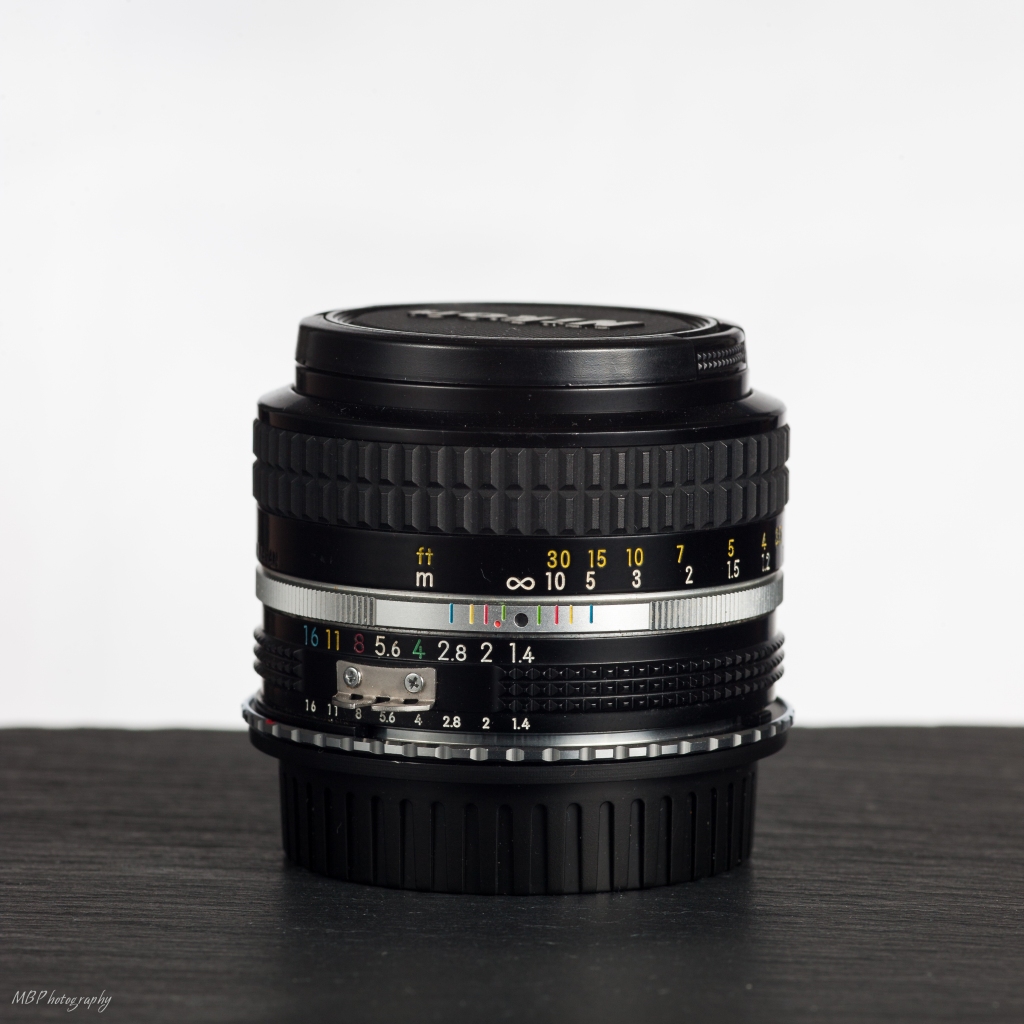
I bought this lens in Exc+++ condition for my Nikon F2 because I considered the 50mm f/1.2 Ai to be too expensive for first steps into film (as my test show’s, it’s also not really worth the premium).
The lens is very solidly built and I was told that Nikon used the same optical formula for the following Ai-S version as well as the (screw-driven) AF version (50mm f/1.4D) that is still sold new today. Additionally, it has a comfortably long focus throw for precise manual focusing.
With some modern Nikon DSLRs you get aperture control so that you can compose and focus wide open and the camera will close the aperture only when you push the shutter down.
3. Nikon Nikkor 50mm f/1.2 Ai-S
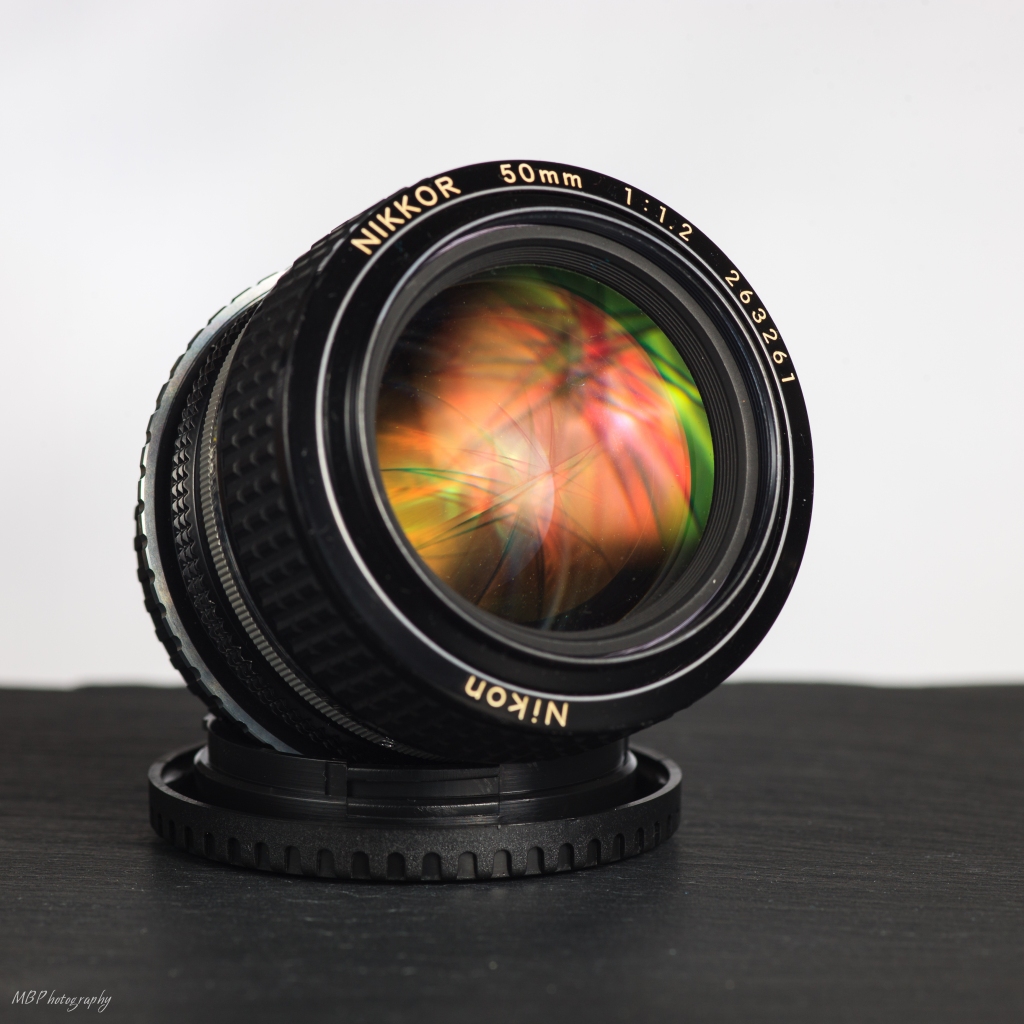
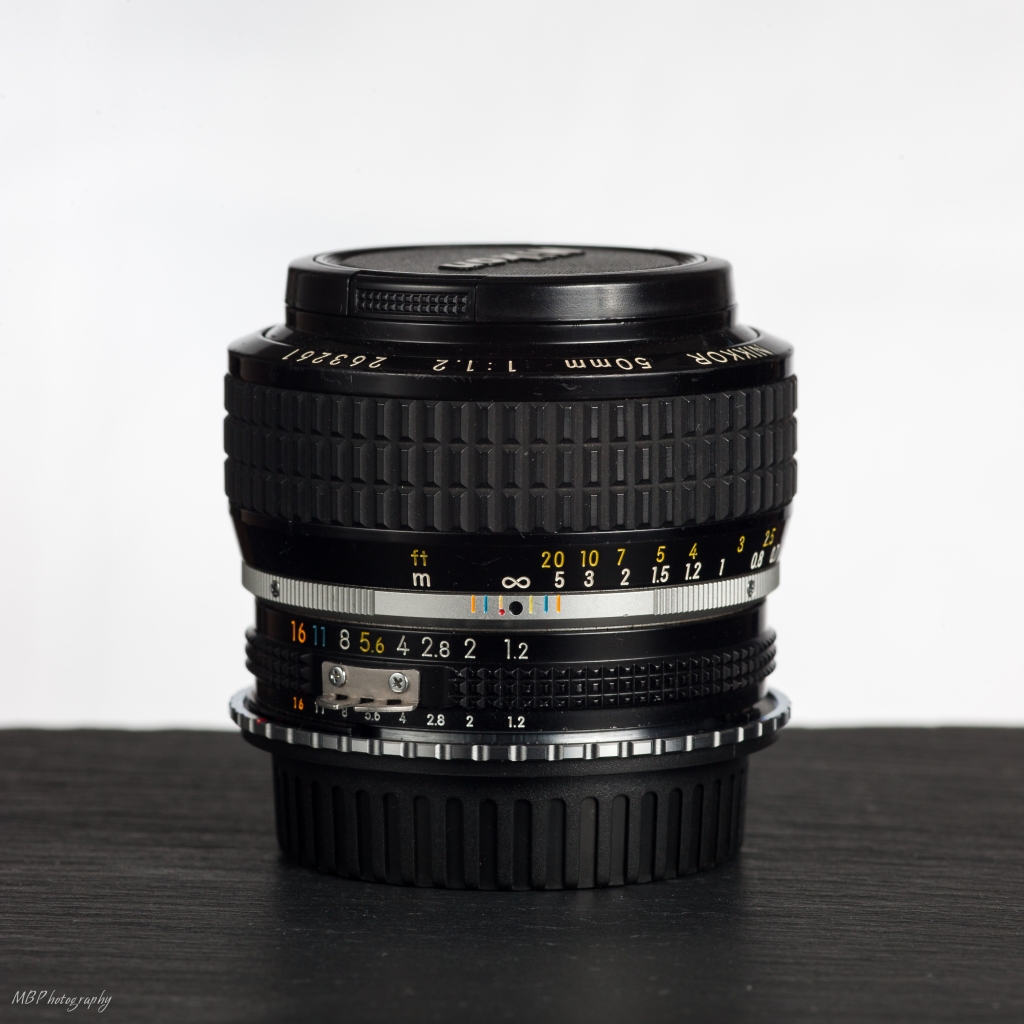
The most expensive lens in the line-up, but also the fastest and only lens sporting a maximum aperture of f/1.2.
It’s also the only lens that can still be bought new in the exact same version, so it’s not really “vintage”.
It’s an Ai-S version, meaning that it came with a more sophisticated aperture mechanism to accommodate modern SLRs. This revision also included the following changes for the 50mm f/1.2:
– 9 instead of 7 aperture blades (which is great)
– a noticeably shorter focus throw (which sucks)
It could be considered the big brother of the Nikkor 50mm f/1.4 if it weren’t for the Noct-Nikkor 58mm f/1.2 (although I’d rather get an Otus for that money..). Also, if you have read my comparison for the two Nikkors, it’s not really worth the premium price over the much more affordable Nikkor 50mm f/1.4 Ai.
4. Asahi Pentax Super-Multi-Coated Takumar 50mm f/1.4

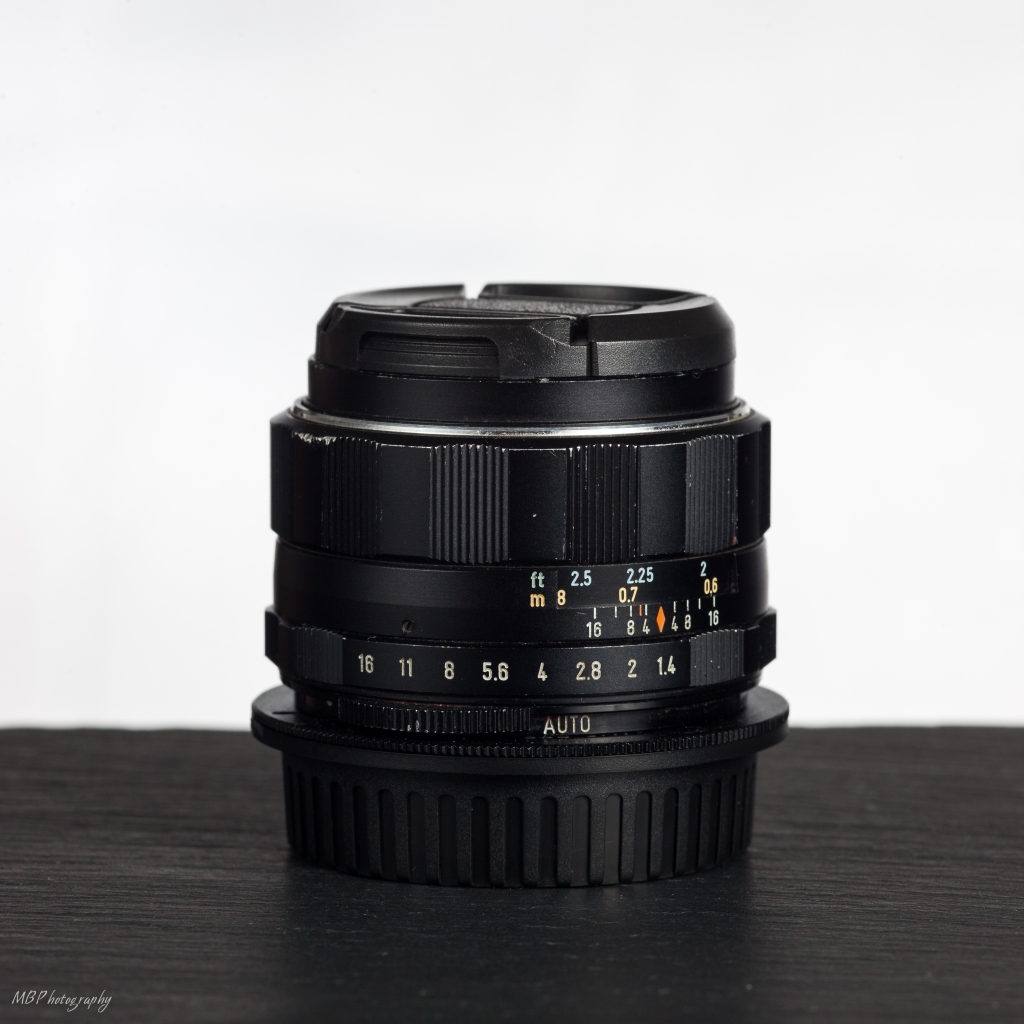
A member of the legendary Super Takumar family, the Super-Multi-Coated Takumar 50mm f/1.4 was the first 50mm lens by Asahi Opt. to sport multi-coated surfaces. However, after only one year, the designation was changed to SMC (I wonder why?) and they introduced a rubber focusing ring.
I wanted the Super-Multi-Coated Takumar for the multi coaring, its radioactive glass (curiosity) and the metal focusing ring. Some people claim it to be the sharpest 50mm for M42 mount, so that’s another reason. Also, it has an 8-bladed aperture and I really want that bokeh to be pleasant (Note, that not all Takumars have 8 aperture blades).
My lens came with some issues, though. The front element has a scratch, the distance scale is not fixed, so you cannot zone focus nor tell at what focus distance you currently are. Shouldn’t be too hard to fix that though. Also, the Takumar has an Auto/Manual-switch for auto-aperture cameras. Unfortunately, my lens came with a defect in that departement too, so at first I couldn’t set it to manual and use it properly.
Because of the broken A/M-switch pin I had to replace the flange-less adapter for one with flange and then had to work on that one in order for the lens to be usable. (you can read more about adapters in this post.)
5. Ricoh Auto-Rikenon 55mm f/1.4
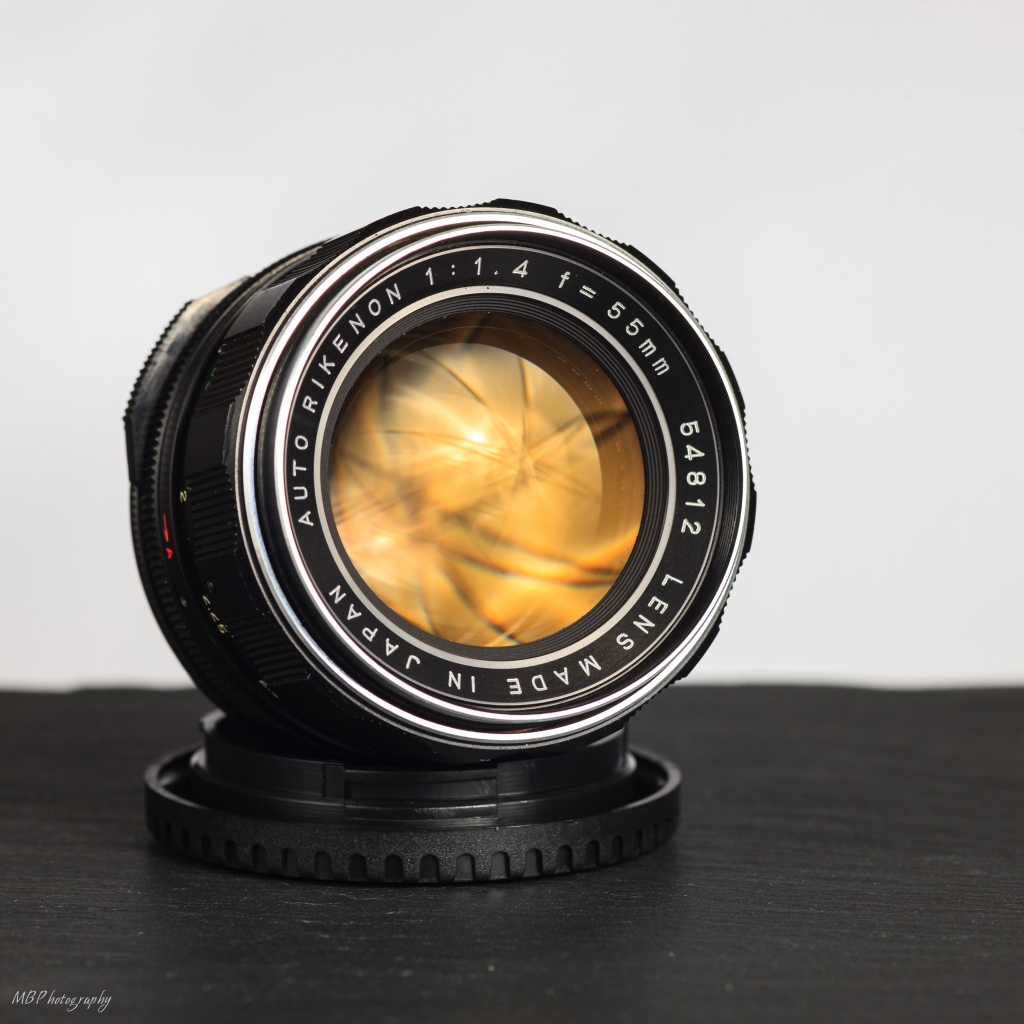
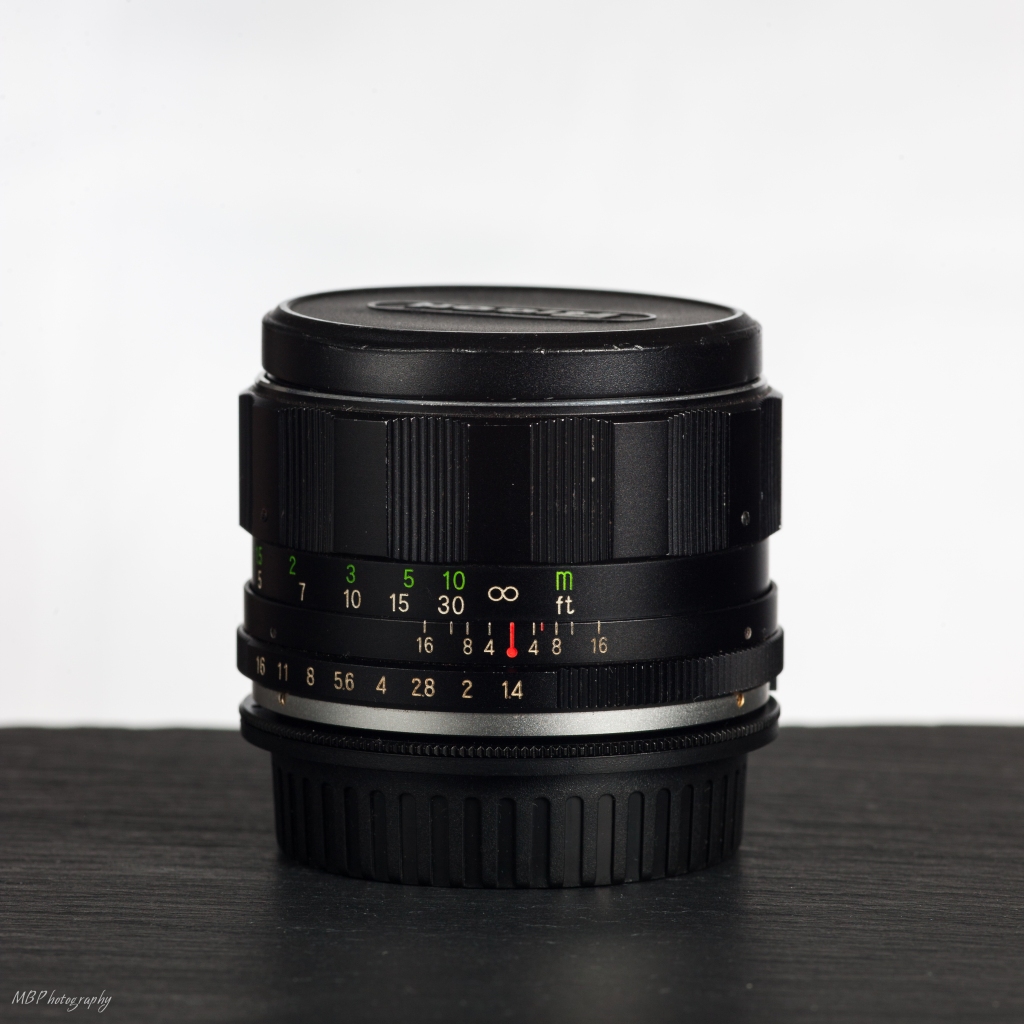
The Ricoh Auto-Rikenon 55mm f/1.4 was built by Tomioka and branded under various company names. You can find this lens with different inscription in the front ring all over the world. (Similar to what you see with Samyang these days (Bower, Rokinon, Walimex, etc.)
I paid quite a lot for mine (100 bucks) and haven’t gotten around to properly use it so far, but I really like the build quality, the metal focus ring and how good it feels in my hands. It’s also the heaviest of all the lenses in this comparison.
The lens is only single coated and comes with only 6 aperture blades, which is a pity.
6. Fujifilm Fujinon 50mm f/1.4
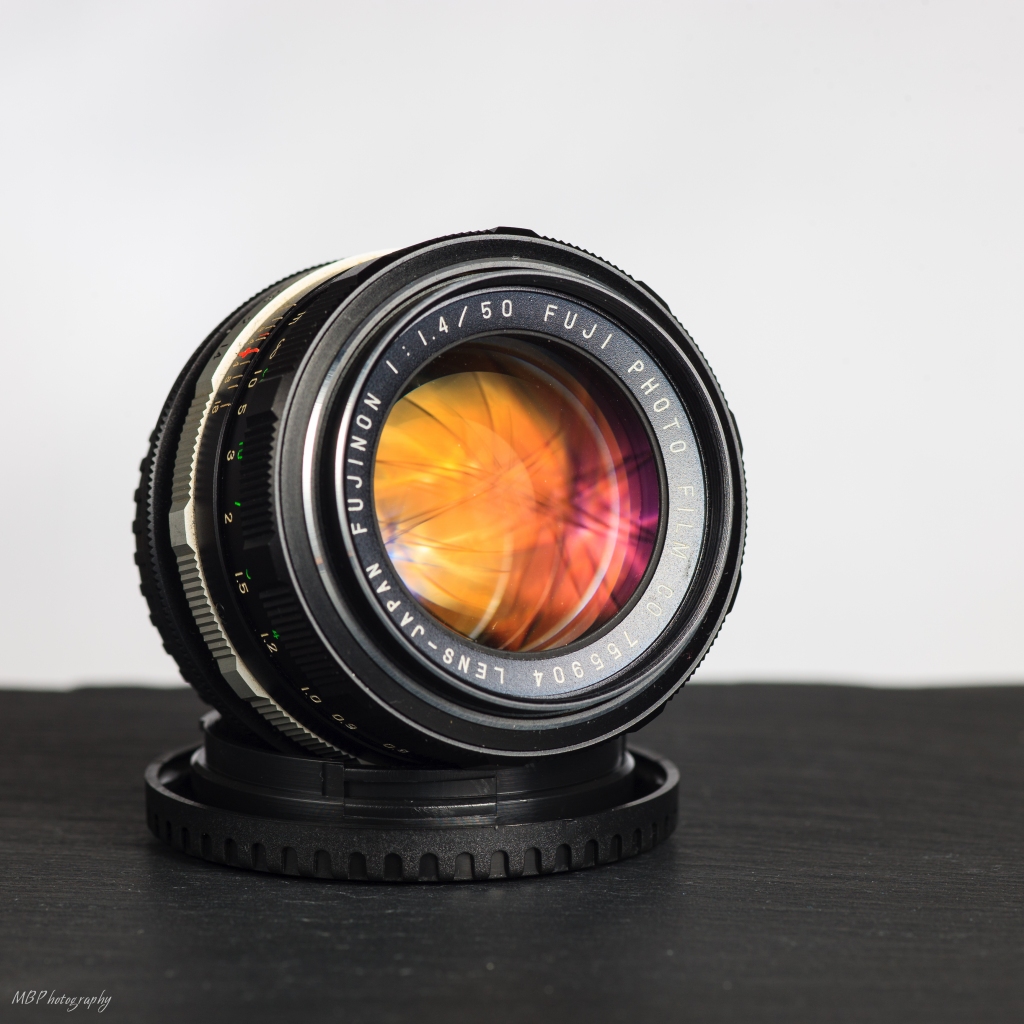
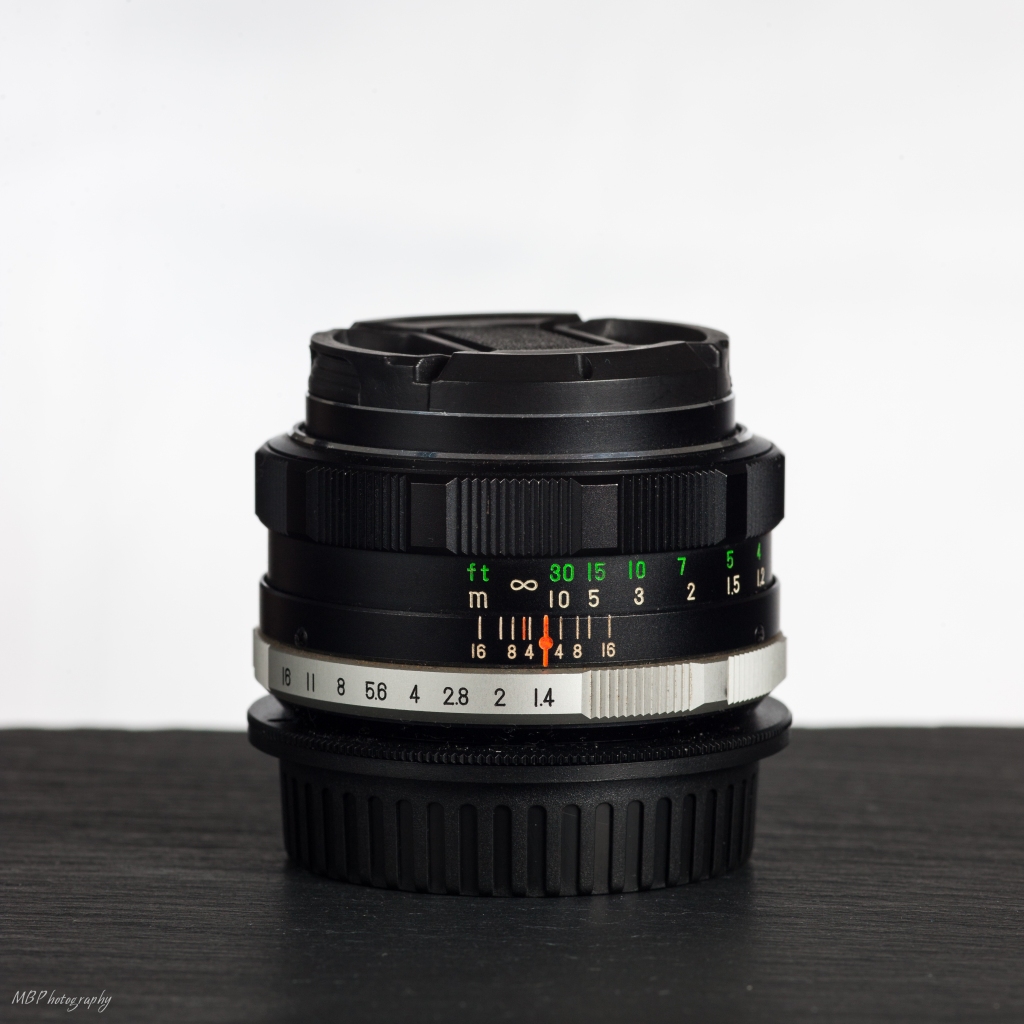
A real beauty of a lens. Built like a tank and really nice to work with. I have the early non-ebc version of the Fujinon which also contains thorium dioxide and therefore will emmit quite a bit of alpha particles. (More about the radioactivity and its potential dangers in this post.)
The lens offers, in contrast to almost all the rest of the field, half stop increments for the aperture, but it only has 6 aperture blades and the coatings aren’t that great either.
7. Fujifilm Fujinon 50mm f/1.4 EBC
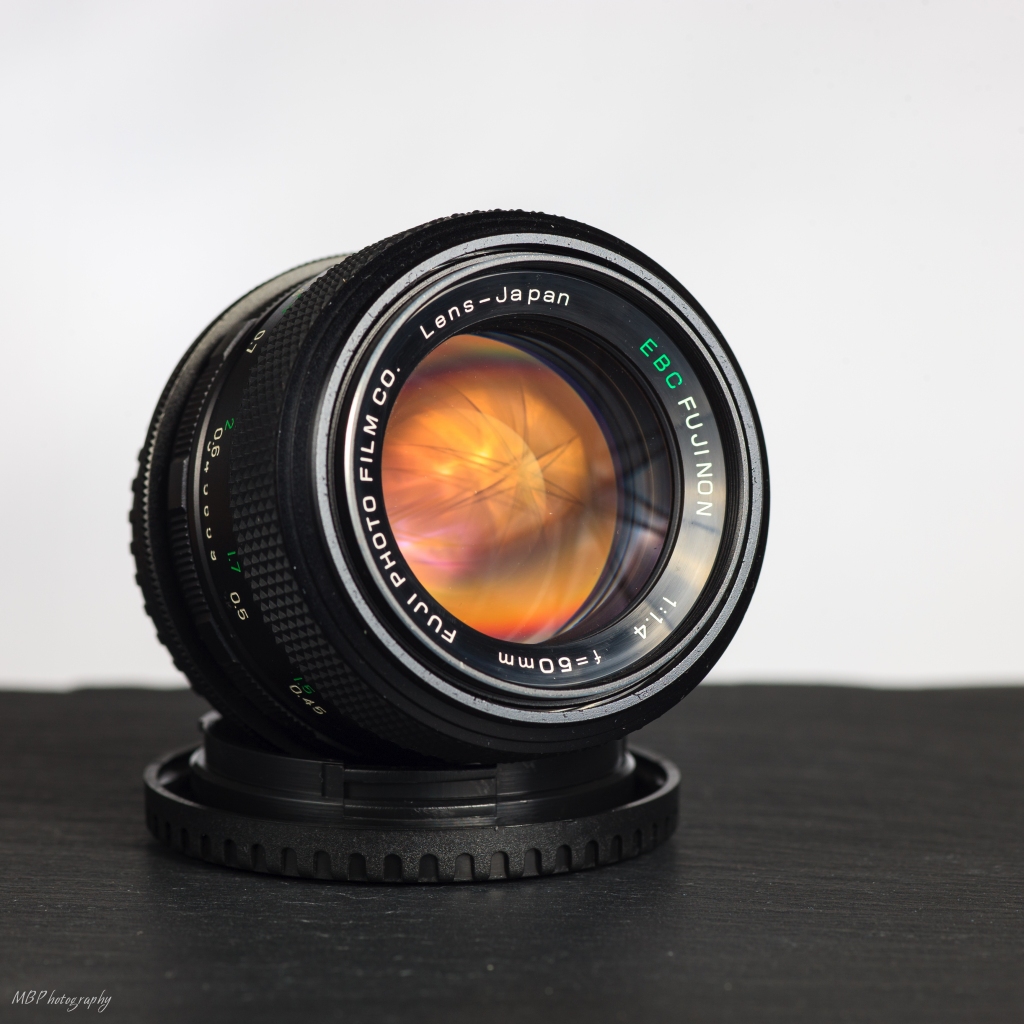
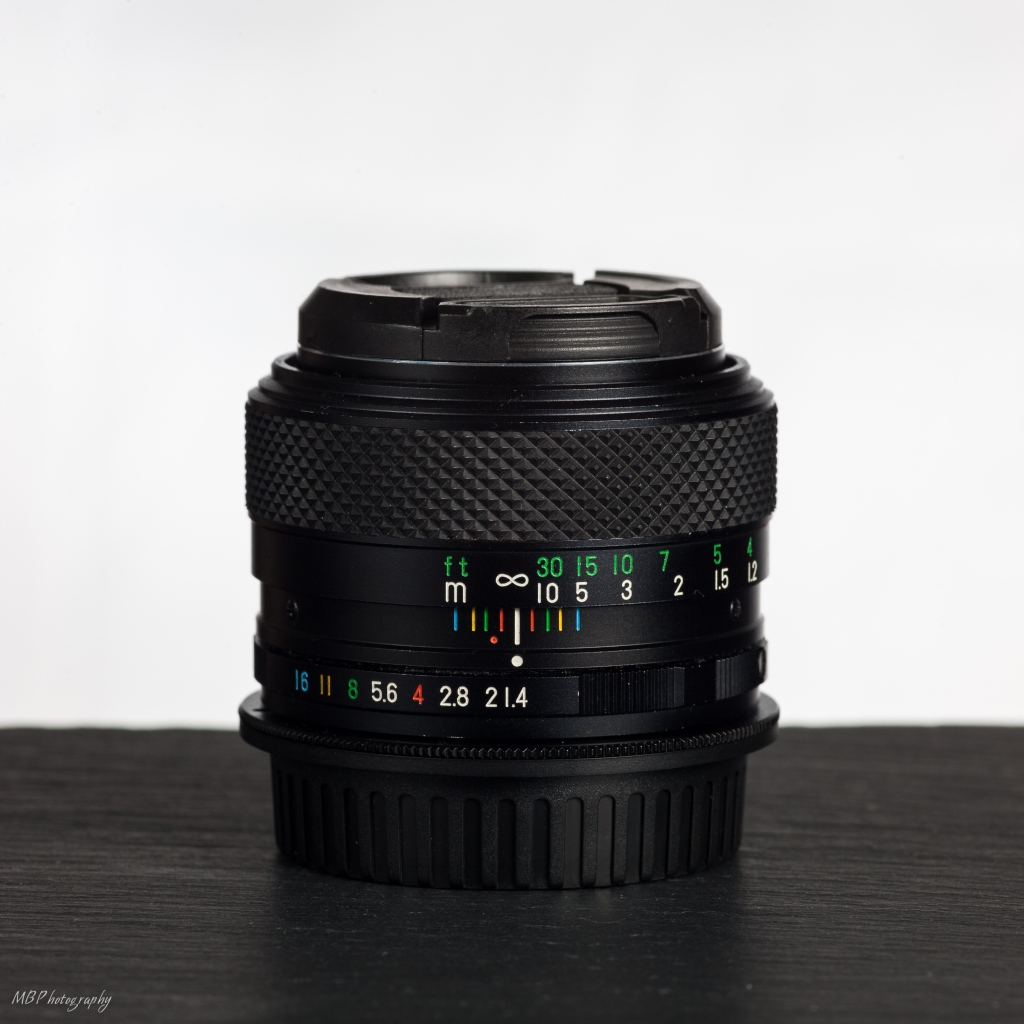
I got this lens at a great price and in perfect condition. It’s the last version of the Fujinon 50mm f/1.4 in M42 mount and it’s not radioactive anymore. However, it has the famous, if not legendary, Fujinon EBC coatings. While the coatings don’t look as stunning as they did before, the lens outperforms its predecessor by a long shot in this test I did previously. There were two revisions between my two specimen: a non-radioactive non-EBC-coated and a radioactive EBC-coated version, but I own neither of these.
The 50mm f/1.4 EBC has a rubber focusing ring and focusing as well as setting the aperture are a pleasure. Unfortunately, Fuji dropped the half stop aperture and kept the hexagonal shape.
8. Voigtländer Color-Ultron 50mm f/1.8

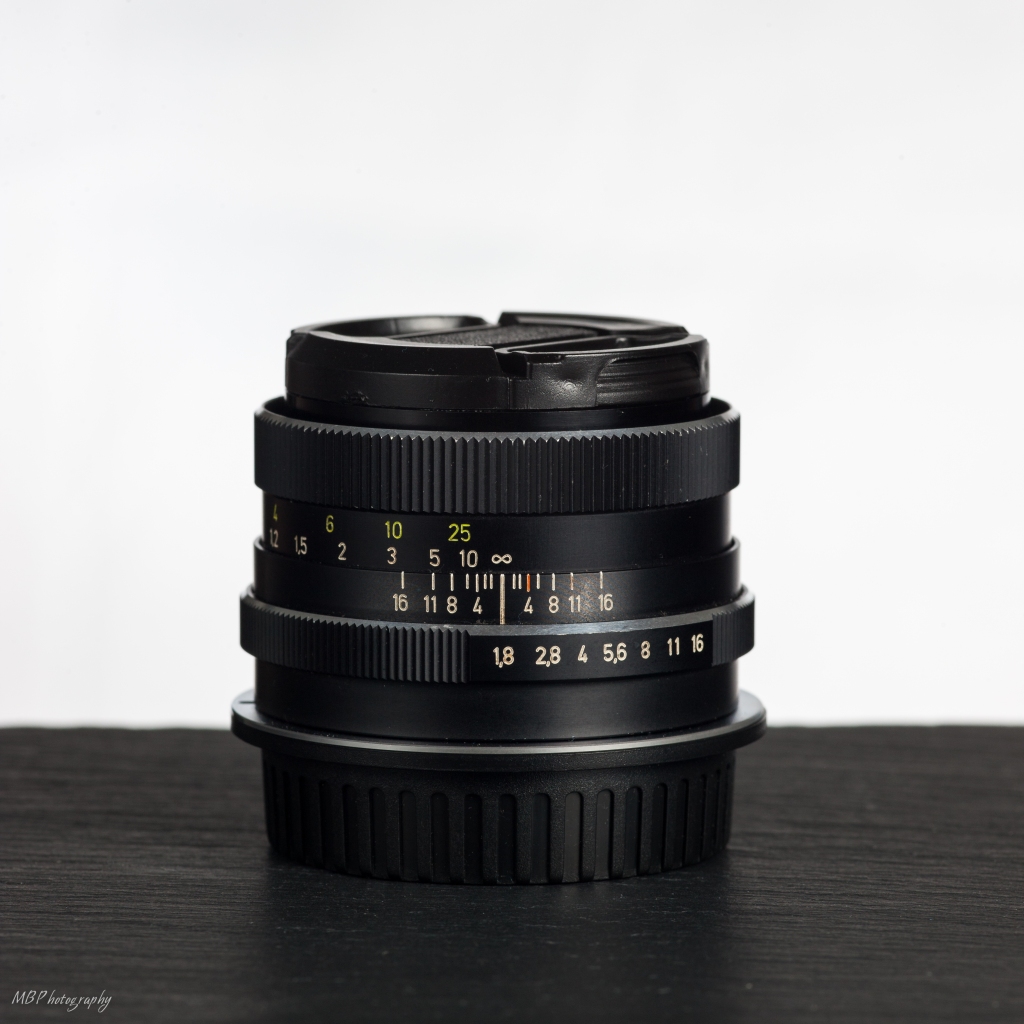
The Voigtländer Color-Ultron 50mm f/1.8 is basically a Carl Zeiss Planar T* 50mm f/1.8. Zeiss owned Voigtländer when they built the first version (m42 mount) of this lens. Later, they sold the company to Rollei, who continued producing the lens, now with a QBM mount, before they dropped the designation and released the same lens under the name “Rollei Planar 1.8/50 HFT“.
I wanted a Voigtländer for the name’s sake and got one in an amazing condition. The lens is full metal and its handling is phenomenal. Focusing is a real joy and the pictures look sharp and contrasty directly out of camera and shot wide open.
I got the QBM mount version of this lens simply because it can be had for half of what people charge for the M42 version. Additionally, for a mere 15 bucks I got a conversion kit (not an adapter!) that replaces the QBM mount with a Canon EF mount and it even comes with an EMF AF confirm chip (more about that in my post about adapters). The conversion requires almost no skills and can be done in 2 minutes with a simple screwdriver (although, I encountered some issues with my lens).
The only drawbacks are the 6-bladed aperture (why would they do that?!) and the fact that the mirror gets stuck on the rear element when focused to infinity. Also, it does not seem to have Zeiss T* nor Rollei HFT coatings after all, because it flares like nothing I’ve seen before.
9. Carl Zeiss Jena Pancolar 50mm f/1.8
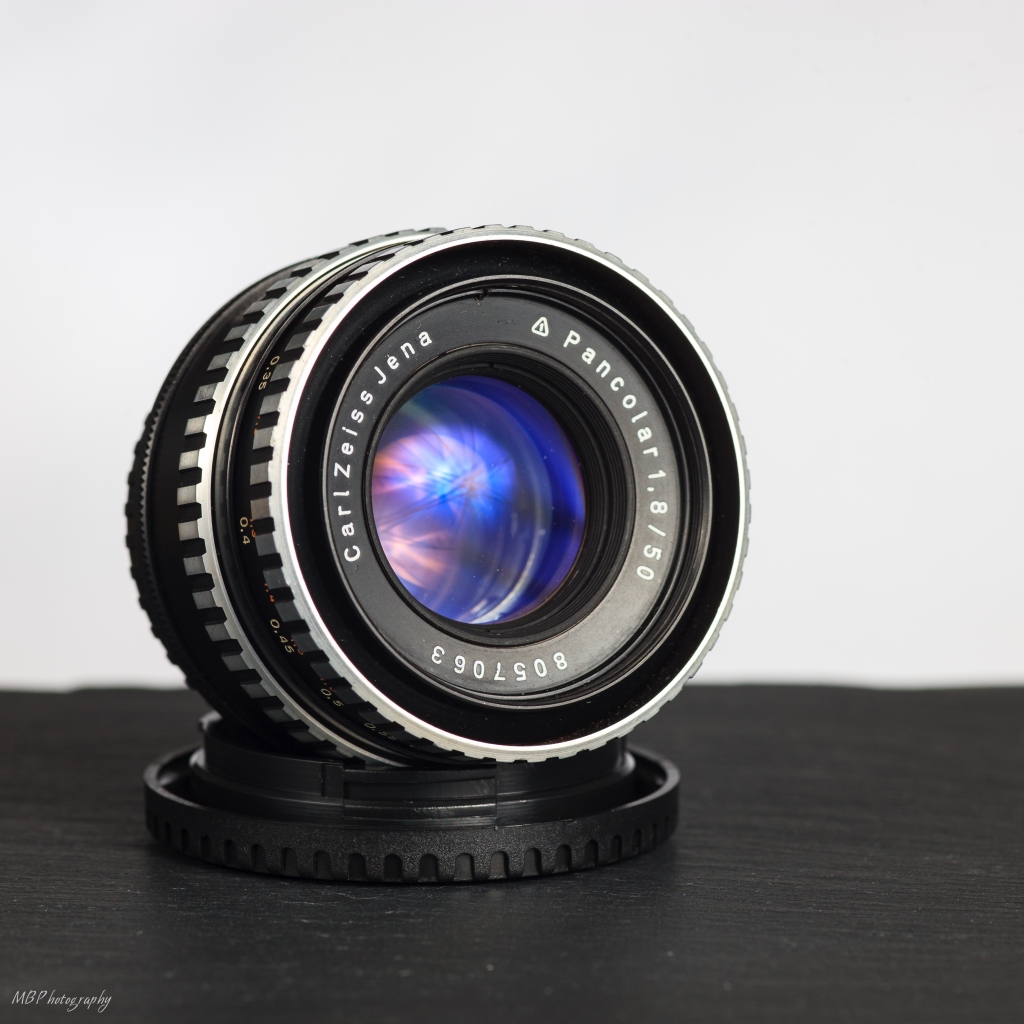
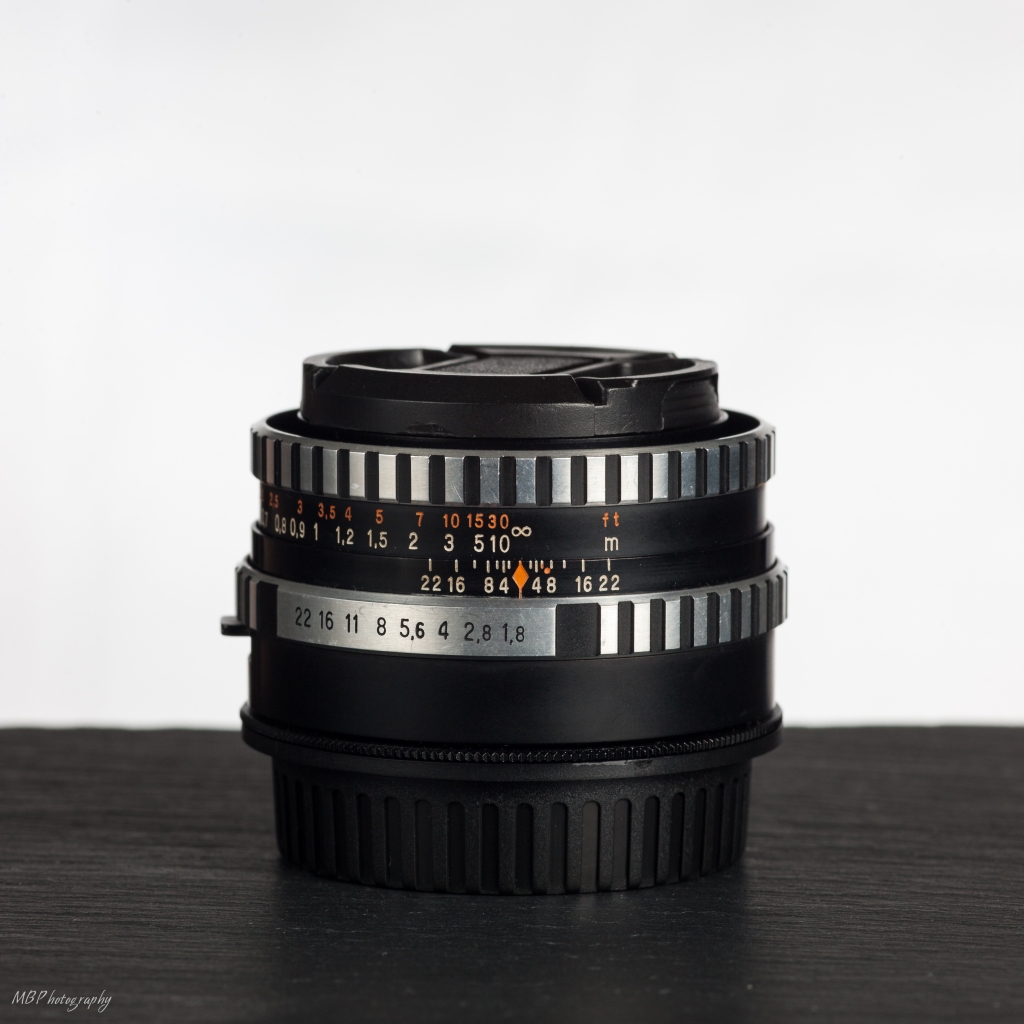
The first of my “zebra” family (Also the first M42 50mm that I bought, before I decided to go on a testing spree). It’s a full metal beauty in great condition and it glows in the dark.
No, unfortunately not.
The lens does, however, contain two thoriated glass elements and therefore emmits a lot of radiation. This also caused a massive yellow tint (more about that in my articles about color casts and radioactive lenses).
It’s pretty small when focused to infinity and the focusing is a joy to use. The lens has 8 aperture blades, very sharp, contrasty and great fun to use.
10. Carl Zeiss Planar T* 50mm f/1.4
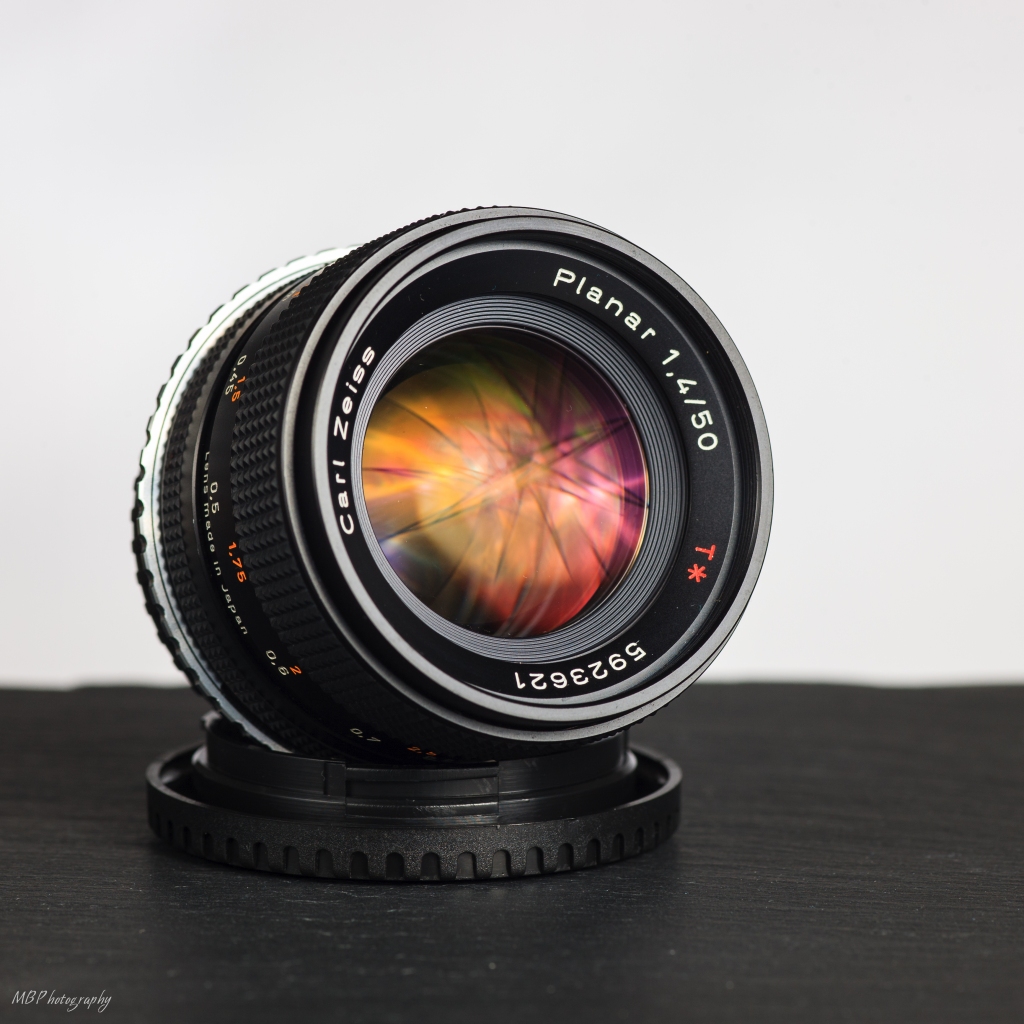

This is the lens I never even considered buying because of the common prices it sells for on eBay. However, when I was browsing for a 50/1.7 Planar – to have the Western Zeiss covered – I stumbled over this auction. The lens was in mint condition and practically nobody placed a bid. It was late at night and I ended up paying a little more than I had intended for the 50/1.7, but still much less than the 50/1.4 usually sells for.
This lens shows what the name ZEISS is all about. Perfect construction, great handling, great performance. It has the famous Zeiss T* coatings too and handles flare quite well.
But, they only put in 6 aperture blades *sigh*.
11. Helios 44 58mm f/2
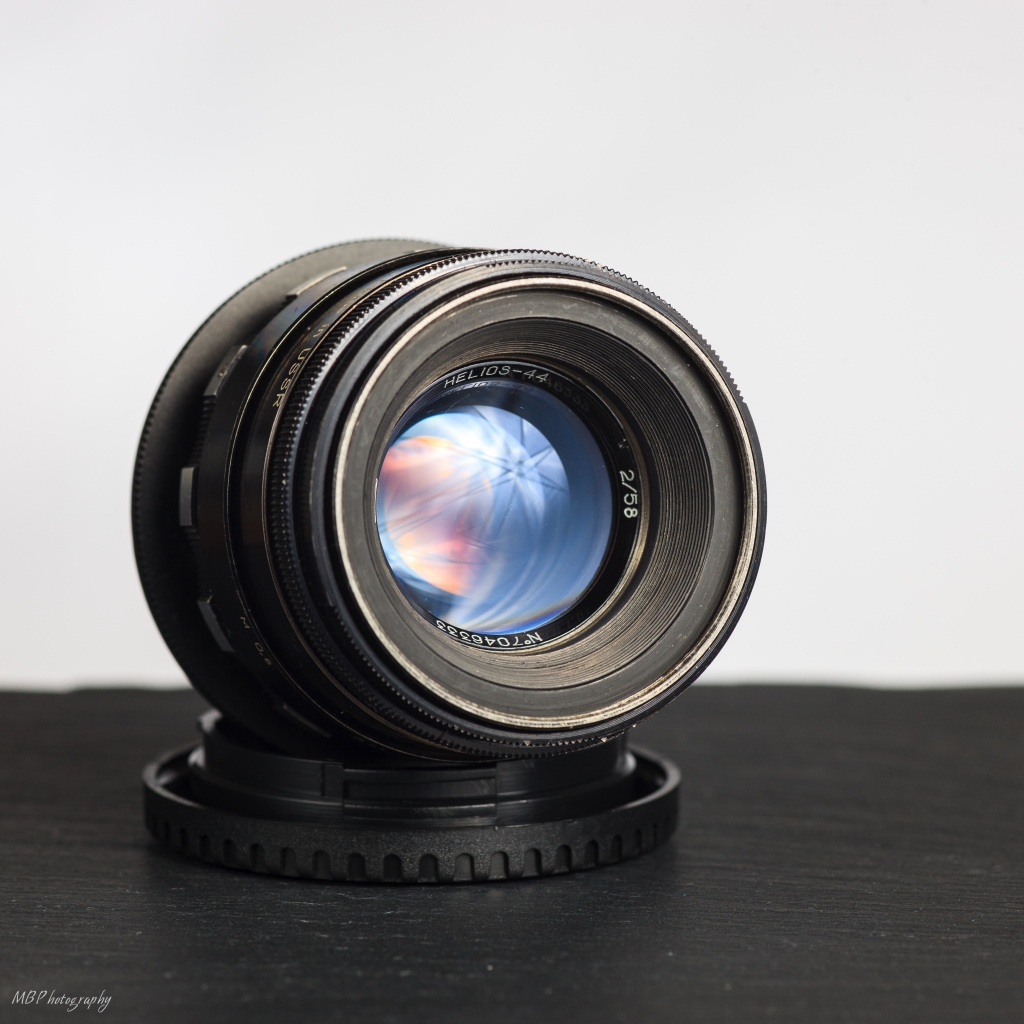
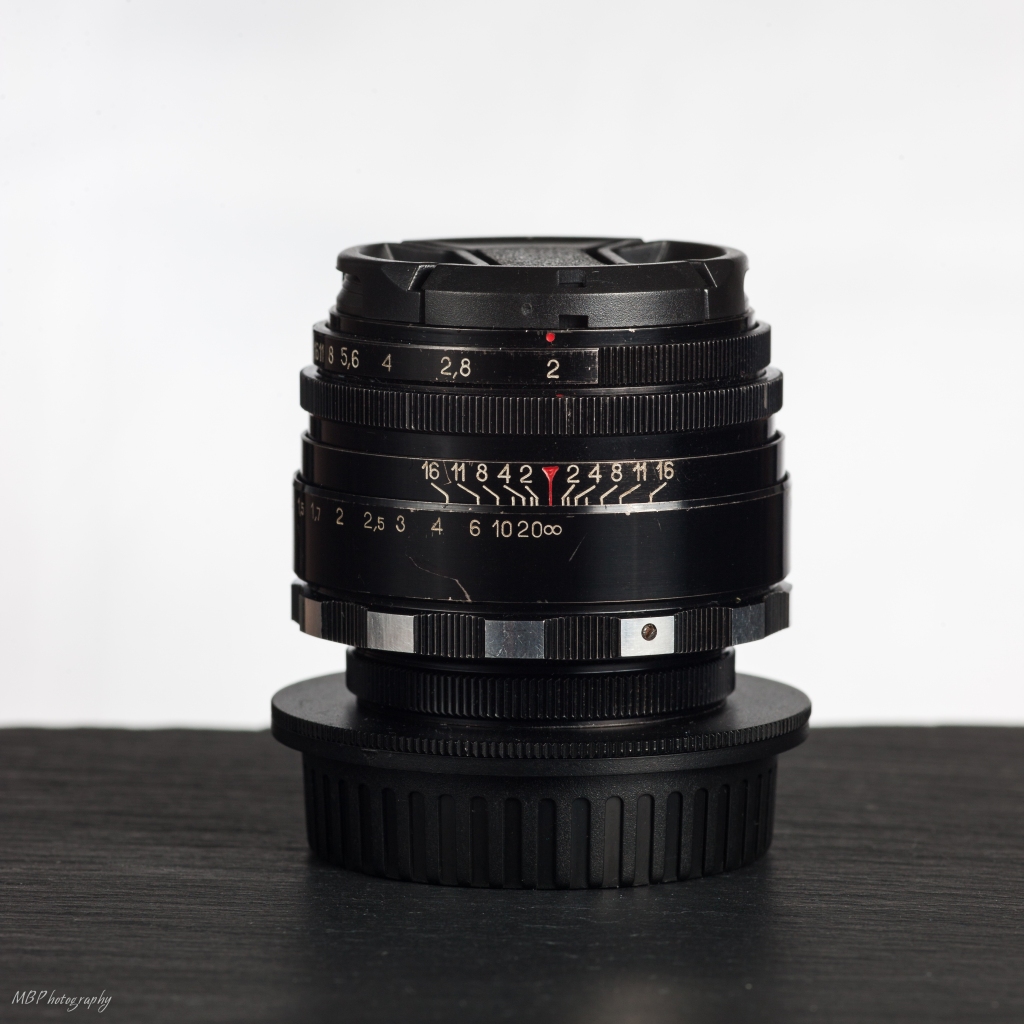
This one was on top of my wishlist for the 50mm lens comparison. The famous Helios 44-2 with the swirly Bokeh. I bought a Helios 44-2, only to realize after a short while that I had in fact bought a first generation Helios 44, with m39 screw mount (not Leicas LTM mount).
The fake “zebra” from russia. As you might imagine, this lens is built like a tank and will most likely still be there when everyone else on the planet has perished. I got the “zebra” version because I liked the look of it with the white/red markings instead of the typical green ones on other Helios lenses. It also comes with an 8-bladed aperture and is fun to work with, having a preset aperture that you don’t see so often anymore.
Being a blunt copy of the Zeiss Jena Biotar 58mm f/2 it also comes with the same problem, the swirly Bokeh.
In my opinion, the only reason to get that lens is because of its optical deficits and therefore one shouldn’t care much for optical quality.
12. Olympus OM-System G.Zuiko Auto-S 50mm f/1.4
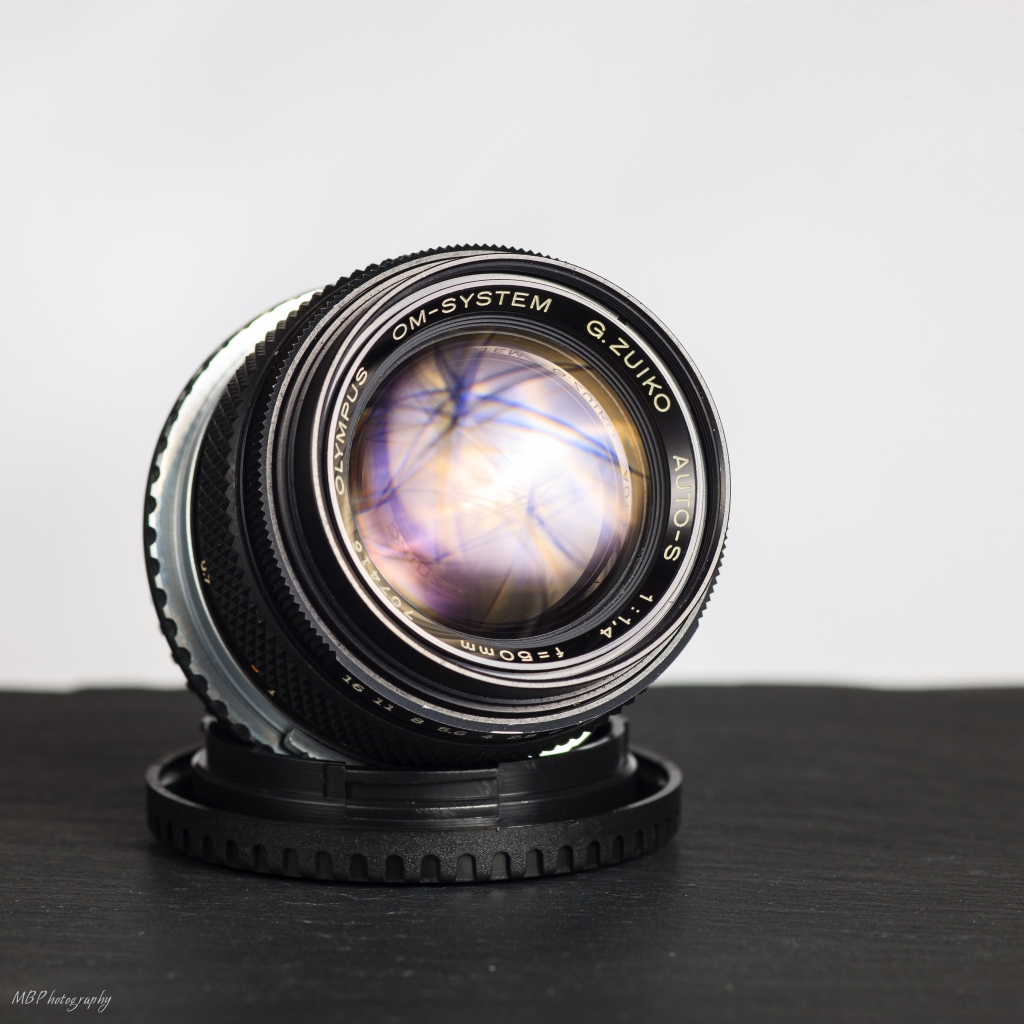
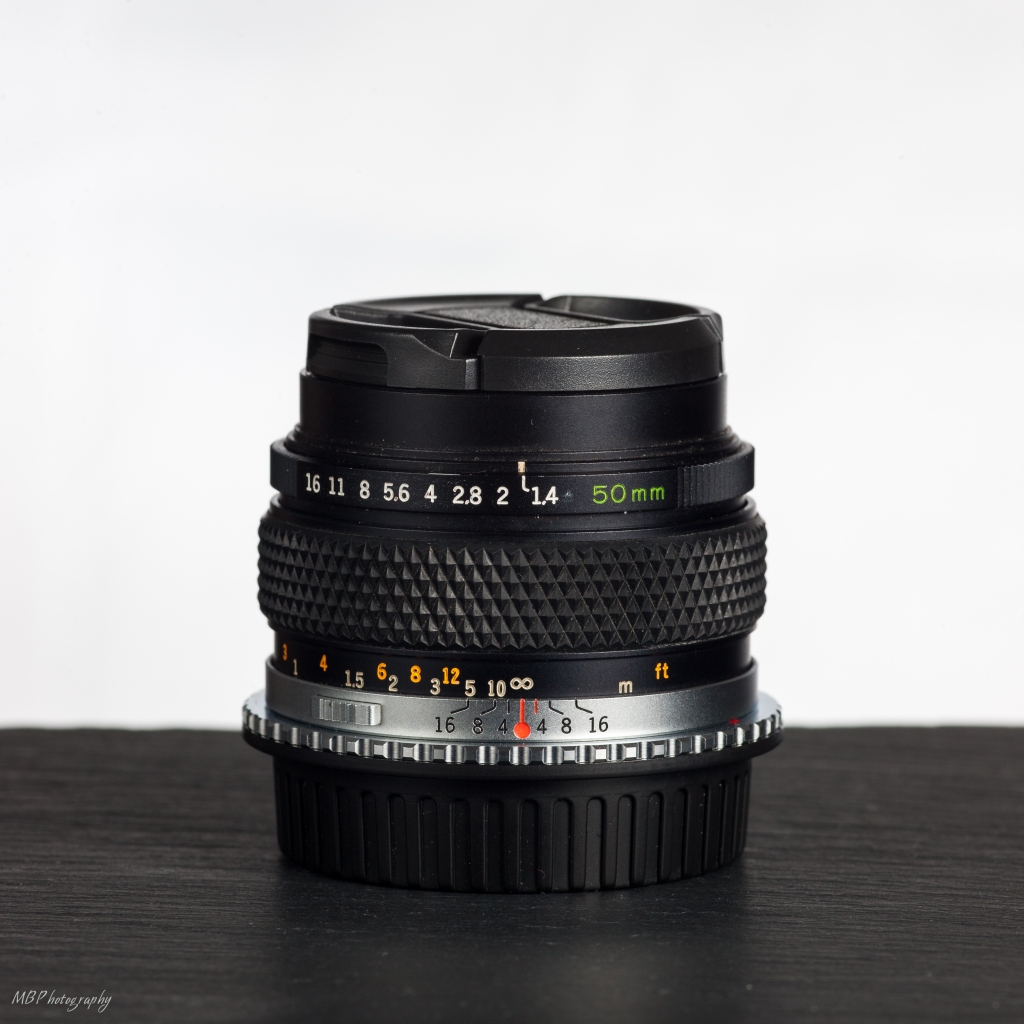
I wanted to get one with multicoating and the improved optical formula, but ended up buying the older version instead, because the other auctions ended up beyond 100 bucks or were won 1 sec before the end by someone else.
Patience is not my strength and so it came that I got punished for buying this lens. The lens isn’t any fun to use, the aperture mechanism was probably opened previously, because the shape is not uniform and the aperture ring is “clickless” because of a missing ball bearing, which might be great for video but not so much for my purpose.
Also, the lens has terrible coatings and suffers from immense flaring even with the sun far outside the frame (I blame the protruding front element for that flaw).
13. Carl Zeiss Jena Tessar 50mm f/2.8
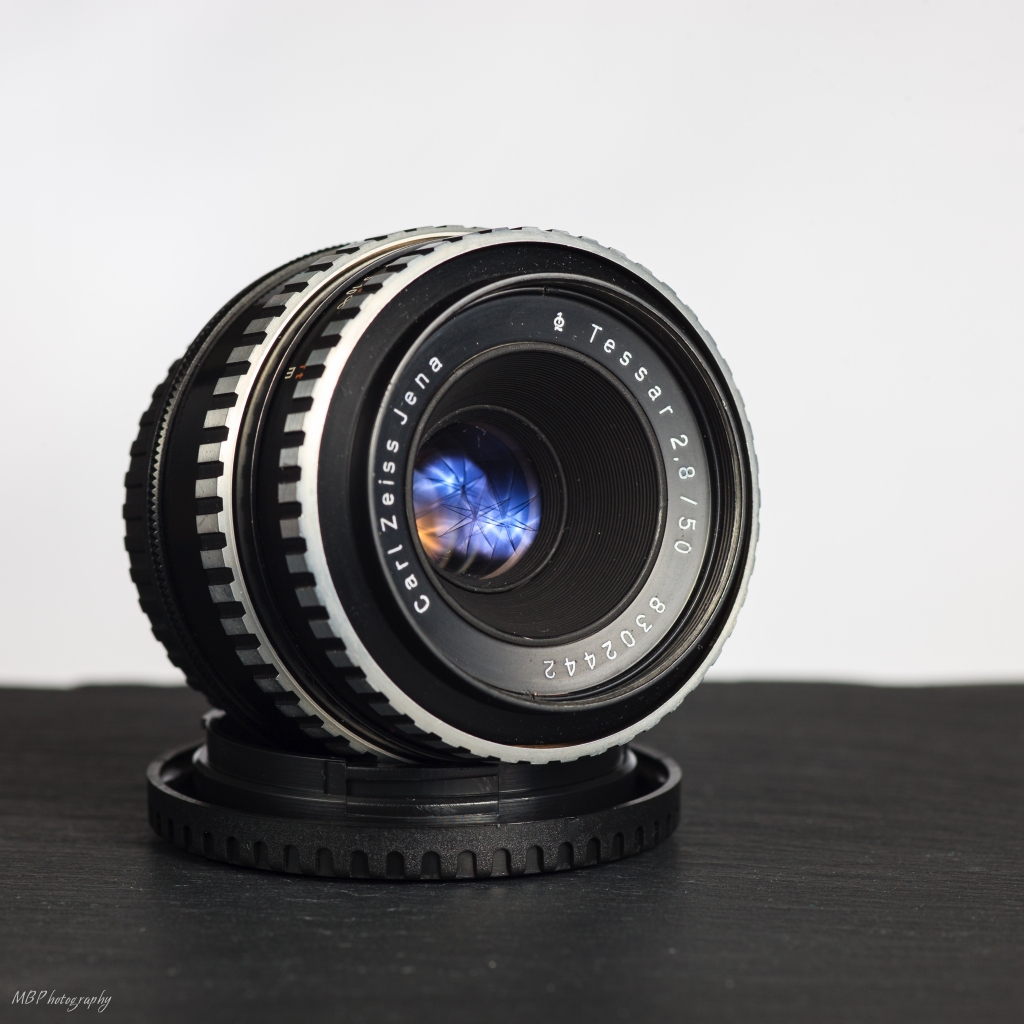
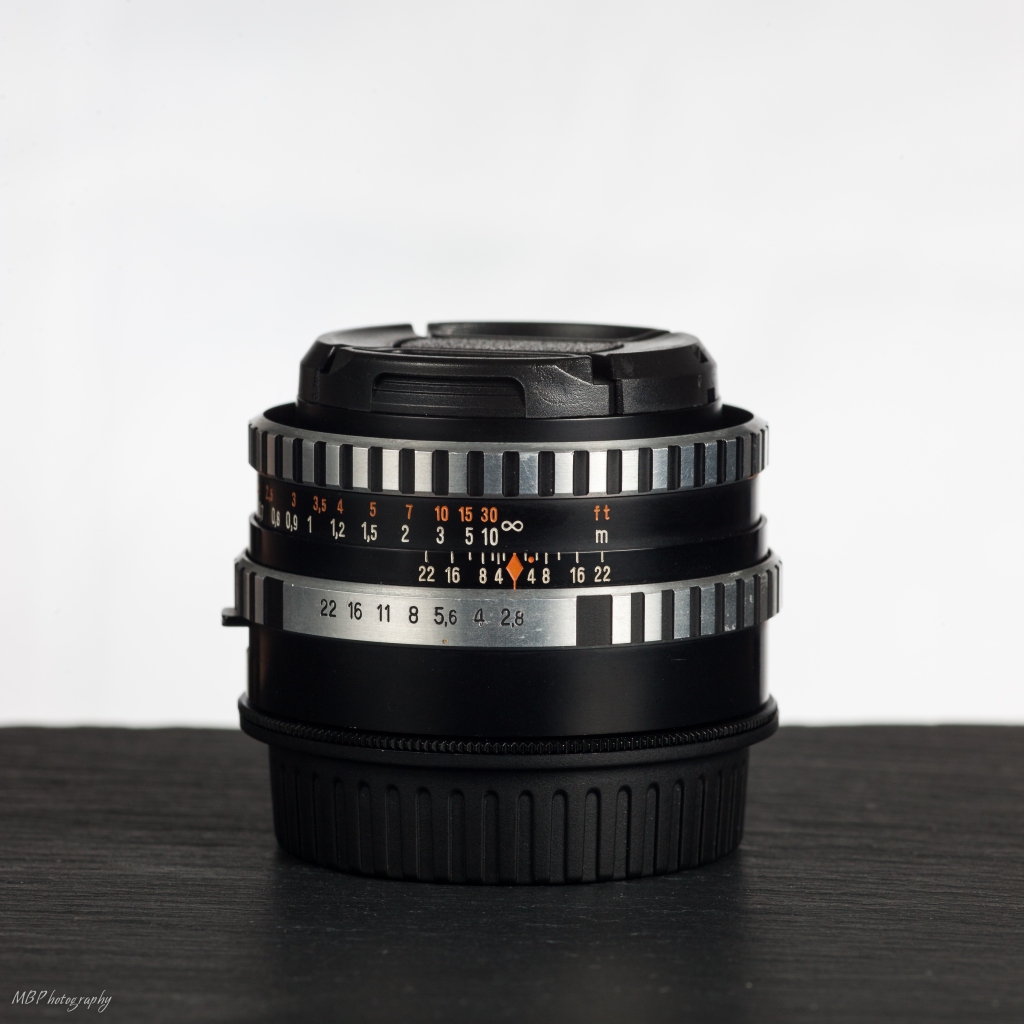
My budget lens in the roundup. I got the “zebra” version because of the looks and because I like metal – I might have mentioned that already. The lens can be had really, really cheap (in other versions especially) if you’re patient (I’m not..). Also, there are quite a few people raving about how great this lens is because of the very short minimum focus distance (only 35cm, like the Pancolar) and the light weight combined with exceptional build quality.
The Tessar formula is rather ancient and has been there for over 100 years now. It has the least complex optical construction, only opens up to f/2.8 (over two full stops slower than the fastest contender) and comes with a simple 5-bladed aperture.
The focusing mechanism of my copy is totally stuck by now because the lubricant turned bad/sticky (as it did in my micro Nikkor 105mm f/4) and requires me to use the force to turn it.
And here is an overview of the field:
The images were processed, cropped, framed and exposed identically, so you can really compare the size and appearance of the lenses in this overview. All lenses are mounted on their EOS-adapter ring with an EOS rear lens-cap. Note that I got cheap front lens caps for all the lenses that came without any or only had one of those annoying slide-on caps.

(Yes, I shot the Takumar first and it’s the only one that wasn’t correctly aligned with the focus scale facing the camera head on.. I only realized that once I had put all the stuff away and transfered the images to my computer.)
Because it’s so pretty, the front view again:
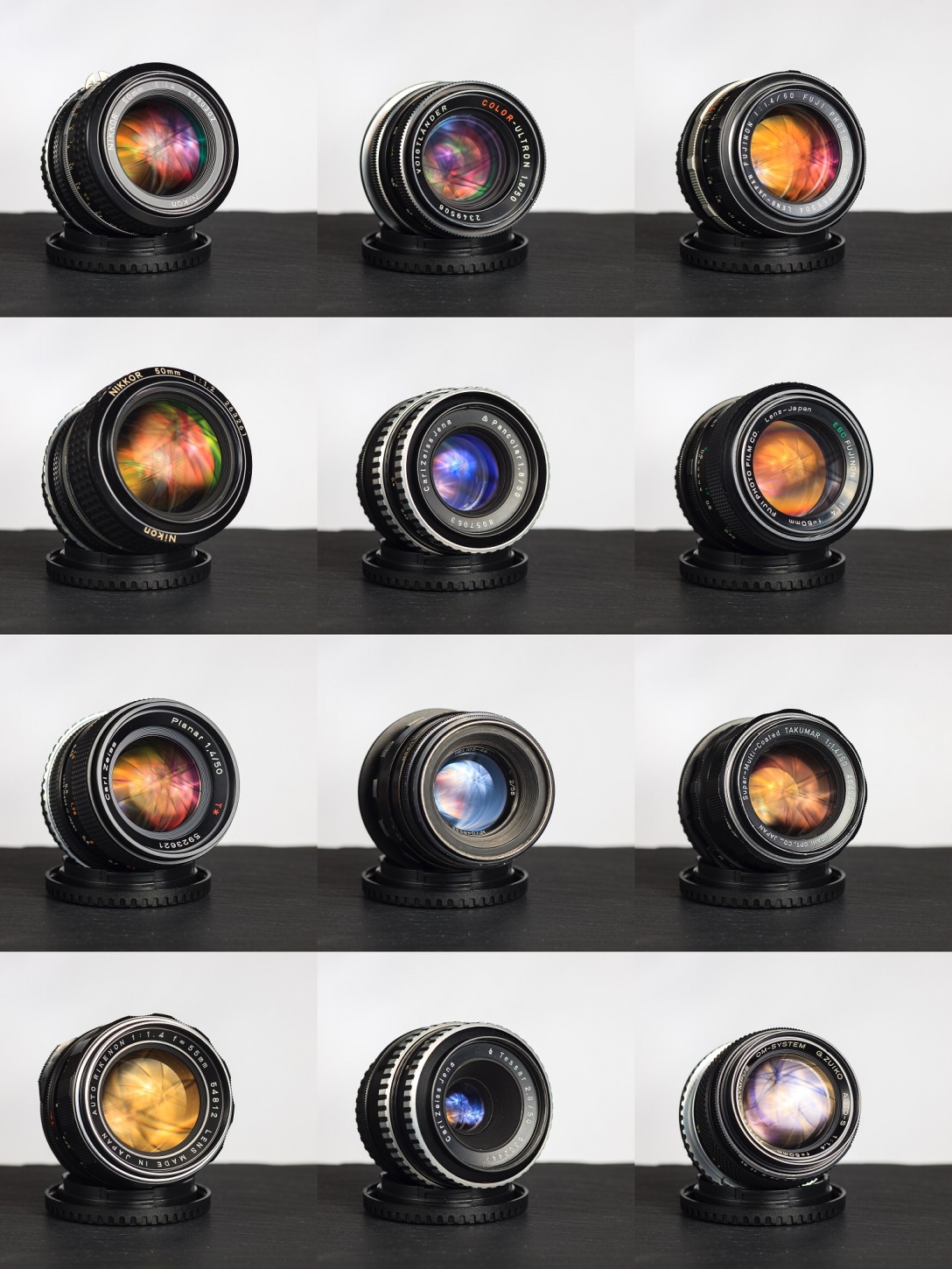
And for the sake of comparison I collected some information on all my lenses in the roundup:

Overview of articles:
Sharpness
In a first article, I cover the center resolution of my lenses. The test also covers micro contrast and colour fringing. A second article will be focusing on the APS-C border sharpness.
Bokeh
In one article, I simply look at how the lenses handle out of focus highlights, so-called Bokeh balls. In a future article, I will compare the rendering of out of focus areas with a busy background at different focal distances.
Flaring
I have three articles covering bright light sources inside or slightly outside the image frame. In a first article, I look at how the lenses control flaring introduced by a light source directly pointed at the lens. A second article focuses on the rendition of so-called starbursts, star shaped pointed lightsources that usually occur when the lenses are stopped down. In a last article, I will cover the handling of flaring with the source of light outside the image frame.
Colours
A first article, coming shortly, will cover the colour cast introduced by my lenses. It’s already known that the radioactive specimen bring some yellowing to the images captured, but what about the rest?
I haven’t yet come up with an idea for a new testing method to reliably compare the colour rendition capabilities of my lenses. In the last test there was no noticeable difference.
Light Transmission
I have looked at the vignetting behaviour of my lenses thoroughly and posted an article related to that. A second article will cover the actual amount of light that passes through the lens. In the past, I realized that my radioactive lenses with their yellow colour cast suffered from a significant loss of light, but some other lenses seem to produce noticeably darker images at identical settings.
Head to head comparisons
Because of their close relation, I did a direct comparison for both the Fujinon lenses as well as the Nikkor lenses. I also measured the radioactivity in my three radioactive lenses and wrote an article about that.
Popular articles
Other interesting articles could be the one covering radioactivity in lenses, or my small review on some cheap vs more expensive filters I own.
For the fans of the Helios 44 58mm f/2 lenses, I wrote a small review focusing only on that very precious lens.
Feedback, comments, criticism and questions are highly appreciated and I would love it if you were to share my Blog with your fellow photo buddies.

I’m excited about this test. I also own some of them: the Tessar, Pancolar (newer black version without thoriatium and yellow tint), Planar (though f/1.7) and Helios. I use them on a Sony A6000 for portraits. Yet, I don’t know which to keep. I only tested the Tessar extensively and it’s very good in the fields, although my model produces heavy haze on bright surfaces wide open to f/4. Maybe I should get a different copy. With the Helios one really need an eye on the bokeh to avoid distraction there. I’ll continue my testing during the holidays.
Merry Christmas
LikeLiked by 2 people
If you like clean performance, the Planar is a keeper. I really love the character the Helios brings along though, so I will keep mine.
The Tessar was bad in all my tests so far..
LikeLike
I used all lenses a little bit more over the holidays and it’s still very difficult to decide. All produce very good images but there’re also very little differences in every-day usage (eg. general rendering, colors). When it comes to edge-cases, there you see differences. But there’s not on single superior lens but every one has its own strengths and lows.
For example, the Planar is super sharp wide open, which makes it very easy to focus (I open the aperture, focus manually with magnification and close aperture to the desired DOF). But OOF backgrounds can be very busy. The Helios is a great lens for portraiture with unsharp corners and nice bokeh rendering (due to the 8 blade aperture). But you always have to keep an eye on your background. It’s also not very sharp wide open, prone to veiling haze and flares a lot. However, the glare (low contrast in backlight) is quite nice. And it’s not a general purpose lens because of the poor corner performance and build quality is also nowhere near the Zeiss lenses. The Pancolar sits somewhere in-between them: not as near as sharp as the Planar wide open but doesn’t get too busy in the background and is significant larger than the others. In comparison with the others, it lacks a little bit purpose. The Tessar however has a very nice rendering, unobtrusive OOF areas, quite resistant against flare, has nice glare, nice color rendering in low light … but slow and (at least my copy) has strong veiling haze up to f/4-5.6.
So we have the clean sharpness-king, a portraiture specialist, a character lens and a jack of all trades but master of none – for now. I have to do some side-by-side comparisons to get a more concrete feeling about colors, rendering, edge cases and stuff.
LikeLiked by 1 person
Your findings don’t overlap with mine that much. Although I agree about the bokeh rendering on the Planar, the Pancolar and Voigtländer both beat my 1.4 wide open. But I’ve heard a lot of good things about the 50/1.7 so I’d probably keep that one.
On the other hand, my Pancolar is very compact and so far the most fun lens to use.
My Helios is really sharp wide open, and stopped down delivers stunning landscapes, but sample variation was extreme.. And my Tessar.. Well, never mind that one.
I’ll get two more Helioses (silver with 13 blades and a new 44-2 version) and will do a comparison of these.
LikeLike
Yes, sample variation is an issue with these old lenses. I read, you have troubles with some of yours as well. Maybe/surely that affects the image as well.
And the F/1,7 Planar is completely different to the F/1,4 and the Voigtlander 1.8. I bought it intentionally instead of the F/1,4. Maybe it’s also a future candidate for your list.
I’m exited about the other Helios’ and interested to read about the differences. I just bought any copy, didn’t even know the version from memory now, and didn’t read much about different renderings of each version. Let’s see.
I found a 13-blade Tessar the other day on eBay but very old. I also think the heavy haze on my Tessar copy is not normal (otherwise its nickname “Eagle eye” would be a joke). But I didn’t managed to figure out a proper copy (Early or later versions? Export version?). I even contacted a Carl Zeiss Jena specialized dealer on eBay but he couldn’t answer my questions too. Maybe I’m just a little bit more picky about haze, CA and flare as I don’t find it easy to remove, and am not a fan of super-thin DOF, bokeh for bokeh-reason and use them on APS-C as a short telephoto lens. For me, character and depth is much more important. Do you plan a dedicated test on depth/volume/3D-pop rendering? IMO that’s the part where the wheat separates from the chaff.
LikeLiked by 1 person
Hello. A very interesting blog. I, too, have more than a dozen normal lenses in 50, 55, and 58mm focal lengths. I very much like the Takumar 55’s especially the f2 and the f2.2 because of their special color palette. They are also very sharp. My most recent acquisition is a CZJ Tessar 50mm f2.8, a silver copy with 12 aperture blades and a 43mm filter size made between 1955 and 1958. I am very impressed by this lens, its sharpness, color and contrast, so much so that I bought a zebra copy made between 1970 and 1975 for comparison. Only five aperture blades apparently but a 49mm filter thread, and a significantly shorter minimum focus distance. All that being said, I’m writing because I have a question. You mentioned that you bought a Helios 44 and found that it had an m39 thread. My question is: can it focus at infinity? I bought a Mir 1 with an m39 thread and find it very unsatisfactory/unsharp at infinity. I am wondering if there is a different registration distance for the m39 versions of early lenses. Thank you.
LikeLiked by 1 person
Hey
Thanks for the feedback. Would love to have a usable Tessar..
Afaik, the registration distance should be identical for m39 and m42 (obviously LTM 39mm is much shorter) but my zebra Helios also couldn’t reach infinity.. have never tried this with the silver version, but I’ll check if I get a chance.
If I remember correctly, there’s a way to adjust this on the lens barrel, but I’m not sure.
LikeLike
Thanks for the reply. There are many Tessars on eBay. I would recommend the one I have with the twelve blades if you can find a clean copy. It has just a simple coating but it seems enough. I’ve only had it for a week, but it’s a favorite. (Photos on Flickr, “William Bolton – Andrew Oid”)
My favorite lens of all time I think was an uncoated Tessar on a fixed lens Zeiss Ikon Contessa LK made in the early 60’s. It rendered light and color beautifully especially when used with a Skylight filter. If you find or remember anything more about infinity focus with the m39 lenses, please let me know and thanks.
I have to add that while it’s easy to separate the qualities of a lens and compare them, it is the aggregate of the qualities that determines how good the shot is.
All the best.
LikeLiked by 1 person
I just discovered that my silver Tessar has a 40.5mm filter size. (For anyone who might want to get one.) Surprisingly, a short time ago one of the Chinese eBay vendors of Tianya filters sent me a 40.5mm CPL filter instead of the 67mm filter I’d ordered. At the time, I thought, who can use this?
LikeLiked by 1 person
Hi,
your blog is very interesting. To me mostly the part about the vintage 50s. I find myself in the same situation. Having collected plenty of 50s (I think I’m at 55 optics now), I’m trying to conduct some testing. I proves to be very difficult. I’ve never wanted to do testing in a studio environment, but wanted to go outside to take real world images. I still do.
With over 50 lenses some very difficult to adapt (and needing to be switched) it is an almost impossible task. So now I’m trying to do the testing at home, out of my window. I still find it very difficult to have the same circumstances for all lenses. It is very difficult to have the same light conditions (I shot on a sunny day – which I still prefer for the nicer colors). Also the different focal lenths make edge comparison impossible, because the edges aren’t at the same spot (I’m shooting my neighbors garden, no wall).
I figure since you have already done some extensive testing, you might have some behavioral rules for me.
By the way, I’m also a teaching lens-, photography- and TV-show addict. If you’d like to see some first results, you can check out my flickr:
Cheers
LikeLike
Thanks a lot. I’m about to buy into a Nikon fullframe system and need some money, therefore I’m currently selling some of my vintage 50s. I will keep the Helios triplet, the old Fujinon and Pancolar and the Nikkor, plus my Leica lenses, but everything else has to go.
Well, that’s an impressive collection, 50+ normal lenses?!
You see, that’s why all testing should be conducted indoors with artificial light. You simply cannot ensure to have identical conditions over 6+ hours outdoors. (And I guess, 6 hours is what it takes to take pictures with all lenses..)
If you shoot outdoors, comparisons in colour reproduction are impossible, as are distortion and sharpness tests, because plants and flowers move and aligning to a wall isn’t that easy.
You can do vignetting, but nobody really cares about that.
Bokeh is a different matter.
I really feel bad that I never did this outdoors comparison.
Wide open and stopped down by one stop would be enough.
Have a subject at maybe 1.5m and the garden as a background. This would be really nuce for comparison.
Also, if your subject has some fine detail you can focus on, you can also draw some conclusions about sharpness.
Good luck
LikeLike
Thank you very much for your answer and your insight. Still for my purposes I won’t test inside in artificial light. I’d rather show what real life images look like.
I already did an outdoor (well, half in- half outdoor) bokeh comparison. The only difference is that I chose a subject distance of about half of what you’re suggesting. Just check out the images in my flickr account linked in the above post.
Testing the sharpness won’t take as long as you think. If I leave out the complicated adaptions (my guess: about 10-15 lenses), one round of testing won’t be longer than 1 hour. So I will try to do so outdoors.
The problem with being indoors is that sharpness can only be tested at a distance of maybe 2 m (due to missing space). That kind of sharpness won’t be what a landscape fotographer is looking for. In my experience many vintage lenses are either good at short distances (for portraits) or at a longer range, that being an exclusive “or”.
LikeLiked by 1 person
You’re right, the sharpness test with the house looks good.
I downloaded the huge bokeh test overview. Great job there! However, I feel like some lenses were labeled wrong. (Canon FD 50 1.2 and 55 1.2 instead of the same lens, Helios 44 2 50, and maybe some more)
I’m really, really impressed that super fast Canon, it’s very sharp and the bokeh is perfect.
Too bad it doesn’t really work on my Canon DSLR..
LikeLike
Thanks for the hint about the false labeling. I will look for mistakes and correct them. And yes, it is definitely one of my findings, that the two FD lenses in my test are among the sharpest. About the Helios: I have a similar one you have a M39 Helios 44 (no “2”9). It’s not “Zebra” though, but has a plasticky glossy black finish.
You could use FD lenses on your Canon if you’re willing to spend about 100 EUR extra for an EDMIKA kit and don’t mind the conversion (which in theory is reversible). I did one on my FD 2/24. Once about 50 miniature metal balls fell out I knew: Reversing the process will be “impossible”. I don’t mind. I want the lens for photography, not collection.
Nowadays I use an A7, so I don’t really care about whatever bayonet a lens has and lens conversions lie in the past.
LikeLike
I once considered getting a Canon nFD 500/4.5L with EDMika conversion kit, but he never replied to my mail (over a year ago), so I dropped these plans.
For now, my plans to adapt vintage lenses are on ice. I’m currently selling most and am about to switch to a Nikon DSLR system (never liked the Sony stuff). I’ll keep my Helios lenses, some of the radioactive ones and obviously my Leica stuff, to be used with the Canon, but I will not buy any new 50mm lenses in the forseeable future.
Also, I just missed a chance to get an affordable Zeiss Jena Biotar that I wanted to compare to my Helios family. Others were too quick to grab it.
LikeLike